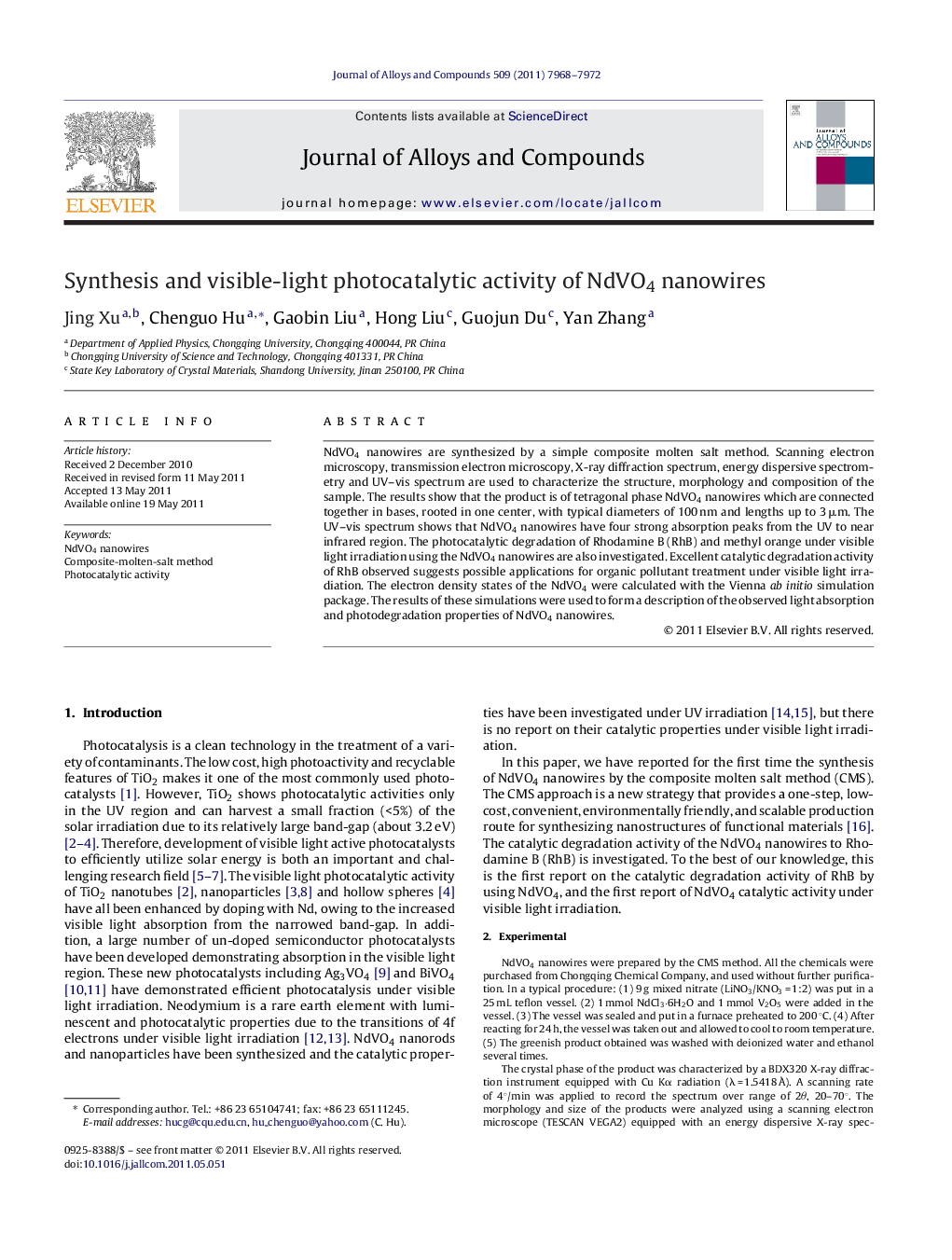| Article ID | Journal | Published Year | Pages | File Type |
|---|---|---|---|---|
| 1617079 | Journal of Alloys and Compounds | 2011 | 5 Pages |
NdVO4 nanowires are synthesized by a simple composite molten salt method. Scanning electron microscopy, transmission electron microscopy, X-ray diffraction spectrum, energy dispersive spectrometry and UV–vis spectrum are used to characterize the structure, morphology and composition of the sample. The results show that the product is of tetragonal phase NdVO4 nanowires which are connected together in bases, rooted in one center, with typical diameters of 100 nm and lengths up to 3 μm. The UV–vis spectrum shows that NdVO4 nanowires have four strong absorption peaks from the UV to near infrared region. The photocatalytic degradation of Rhodamine B (RhB) and methyl orange under visible light irradiation using the NdVO4 nanowires are also investigated. Excellent catalytic degradation activity of RhB observed suggests possible applications for organic pollutant treatment under visible light irradiation. The electron density states of the NdVO4 were calculated with the Vienna ab initio simulation package. The results of these simulations were used to form a description of the observed light absorption and photodegradation properties of NdVO4 nanowires.
Graphical abstractNdVO4 nanowires are synthesized by a simple composite molten salt method. The effective light absorption and photodegradation are found.Figure optionsDownload full-size imageDownload as PowerPoint slideHighlights► We report the fabrication, characterization and photocatalytic activity of NdVO4 nanowires synthesized by the composite molten salt method. ► The NdVO4 nanowires show effective light absorption and high catalytic degradation activity to Rhodamine B. ► The electron density states of the NdVO4 were calculated with the Vienna ab initio simulation package, which explains the light absorption and photodegradation properties.
